The weird, the wacky, and the unusual. Today we are taking a look at some of the stranger flowers that call Central Oregon home. Whether it’s an unusual flower petal shape, strange bloom location, or a funky smell, all of these flowers are a beautiful and wonderful part of our natural world!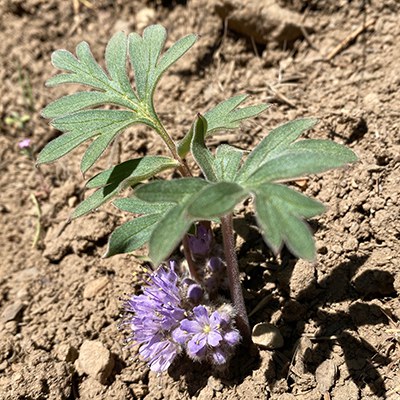
Other common names: Wool breeches
Where are the flower blooms on this wildflower?!? Underneath the leaves! While most wildflowers choose to have their blooms above the leaves, the ballhead waterleaf is an exception. Blooms are located close to the ground with the plant’s leaves towering overhead.
Flowers have five petals that are generally purple with stamens that extent beyond the petals. Flowers form a tight globe. Leaves are 2-5 inches long with 5-7 rounded leaflets. Ballhead waterleaf plants grow to 4-18 inches tall and can be found in forests and sage deserts.
Bloom time: Early spring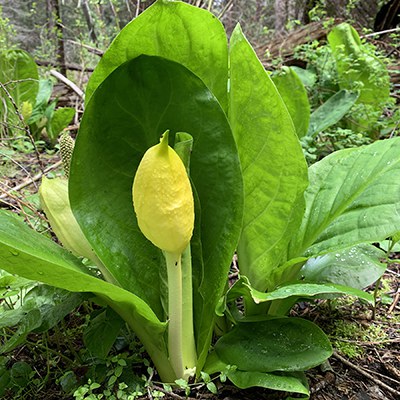
Other names: Yellow skunk cabbage, swamp lantern
Based on the name, I bet you already know why this flower is unusual! That’s right—a strange, foul smell. This adaptation is a way to attract pollinators that are attracted to rotting meat, like beetles and flies. In addition, its smell and bitter taste are a form of protection, keeping deer and rabbits from nibbling on it.
Skunk cabbage has leaves appear when the plant flowers. They are egg-shaped, green, and 1-2 feet long. Flowers are yellow to yellow-green on a short stalk and partially covered by a very large yellow bract (a modified or specialized leaf). Skunk cabbage loves marshy, wet areas.
Bloom time: Early spring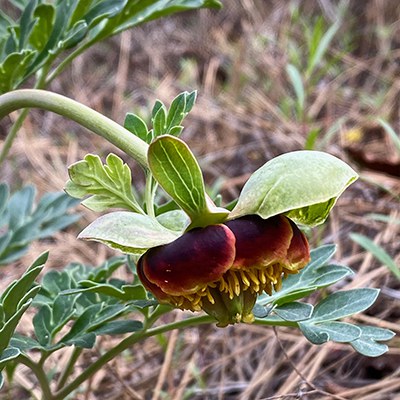
Other names: Western peony
This bloom is easy to miss with its nodding, muted flowerheads. This generalist wildflower that attracts all sorts of flies, wasps, and other insects for pollination has an interesting feature that might not be seen at first glance. Unusual for peonies, Brown’s peony has floral nectar, which is a critical food source for native pollinators in early spring when there aren’t many food options.
Brown’s peony grows 8-20 inches tall. It has erect stems with 5-8 leaves per stem. Leaves are divided with rounded tips. Flower is clustered at the stem top and hangs down. The flowers have 5 leathery, greenish to purplish sepals, 5 smaller and deep red/brown petals with yellow edges, then many stamens and 2-5 thick pistils. The flowers are quite an unusual sight! Brown’s peony is one of just two members of the Paeonia family that are native to North America. It thrives in fir and aspen woods, but can also be found in Central Oregon’s ponderosa pine forests and dry sagebrush deserts.
Bloom time: Late spring – early summer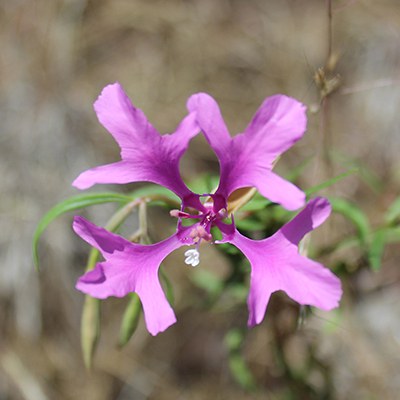
Other names: Elkhorns clarkia, deerhorn clarkia, pink fairies
What an unusual flower shape! I’m guessing that when you were a child and drew a flower, the petals did not look like this (or maybe you were a terrible artist like me and they DID look like a ragged robin!). Ragged robin has pink petals that are divided into three lobes with the central lobe wider than the other two. It grows 6-18 inches tall and has 1-3 inch long leaves with pointed tips. Ragged robin grows in rocky, sandy locations. Although the petals may be strange, pulchella is Latin and means ‘beautiful.’
Bloom time: Early summer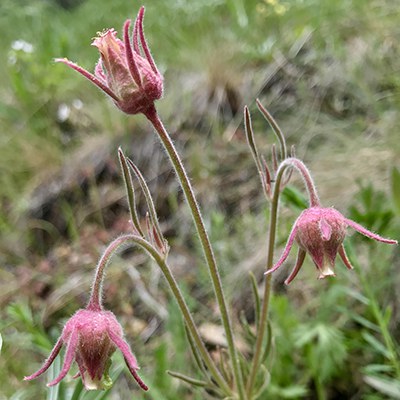
Other names: Old man’s whiskers
Another unusual flower shape! This time, the flower looks like a bulbous lantern. These flowers are usually in groups of three on nodding stems. The sepals of the plant (the part that supports the petals in bloom and is often green) are fused together to form a cup (or bulbous lantern!) with tips curving outwards. You can just barely see the flower petals inside the sepals; they are red, cream, or yellow. Prairie smoke grows 8-20 inches tall with clumps of fern-like leaves. You can find these beauties in dry meadows, pine forests, and sagebrush desert. This flower’s common names are derived from its appearance after it blooms. Striking purplish seed heads with feathery tails help the flower disperse its seeds through the wind.
Bloom time: Midsummer
After looking at a few of the more unusual wildflowers of Central Oregon, I hope you have a newfound appreciation for the variety of native blooms that call our region home!
Sources:
Wildflowers of the Pacific Northwest by Mark Turner and Phyllis Gustafson
Ballhead Waterleaf Flowers Get Help from Unexpected Guests, University of Colorado
Finding Brown's Peony a Sweet Attraction by Nan Vance
Learn more:


